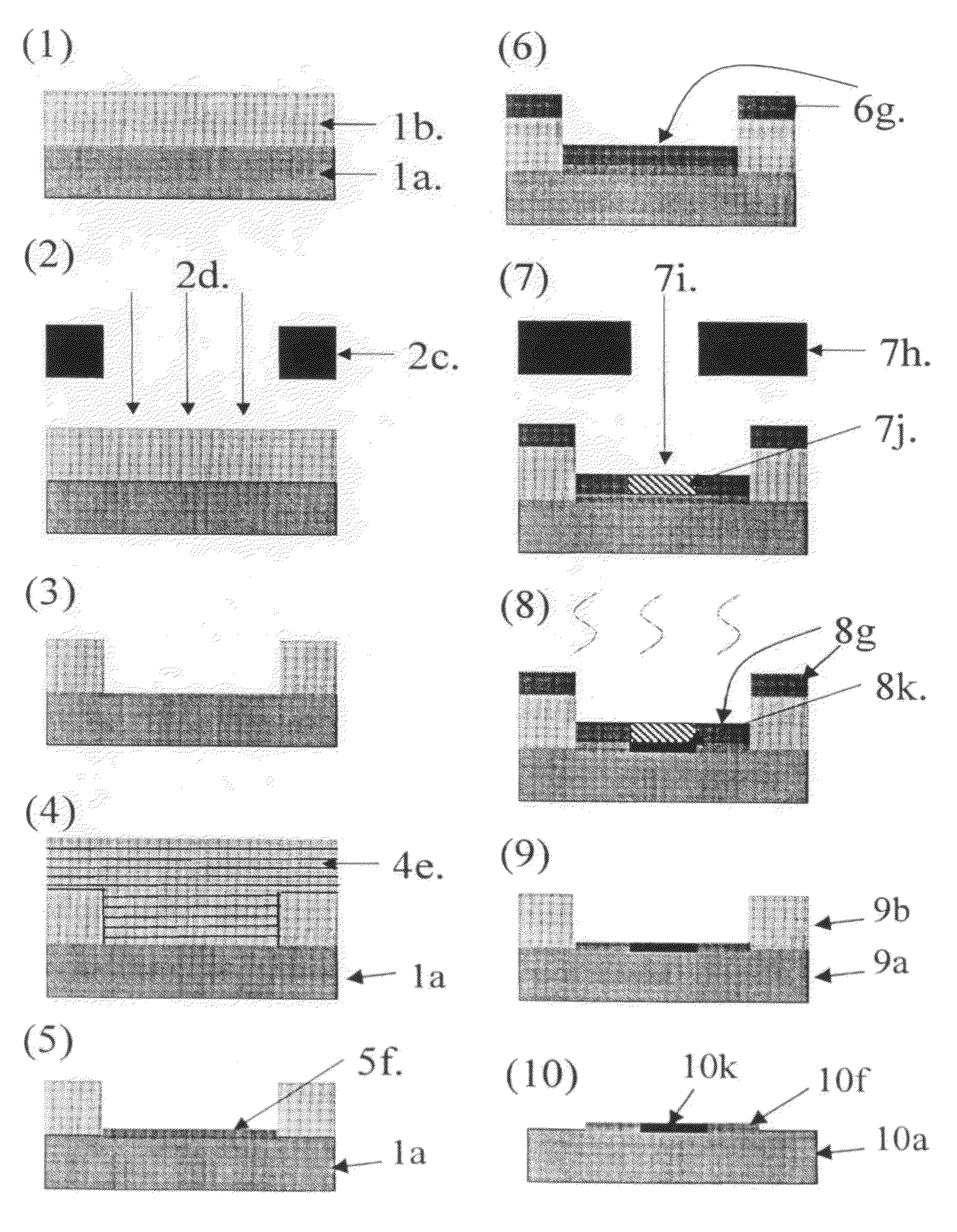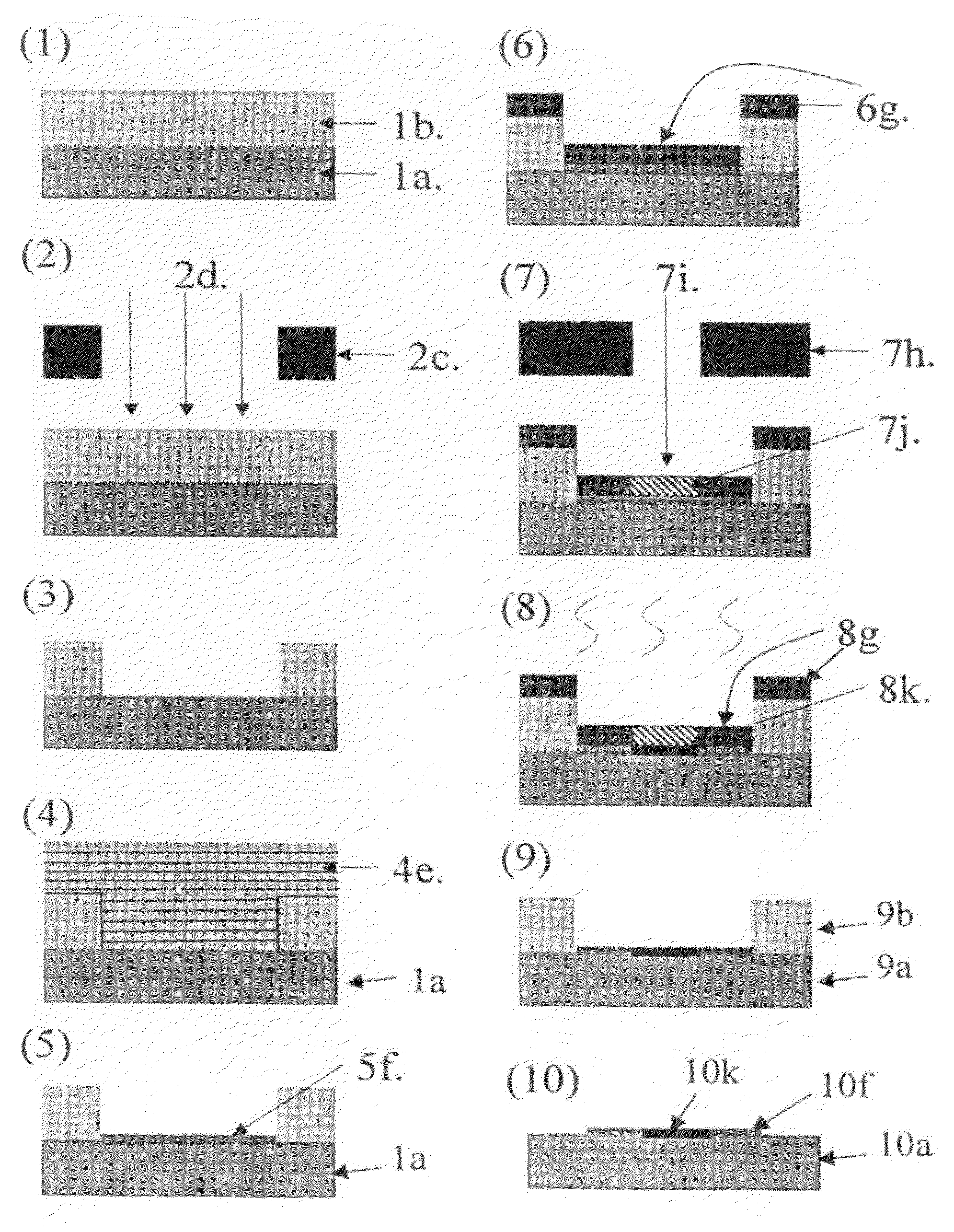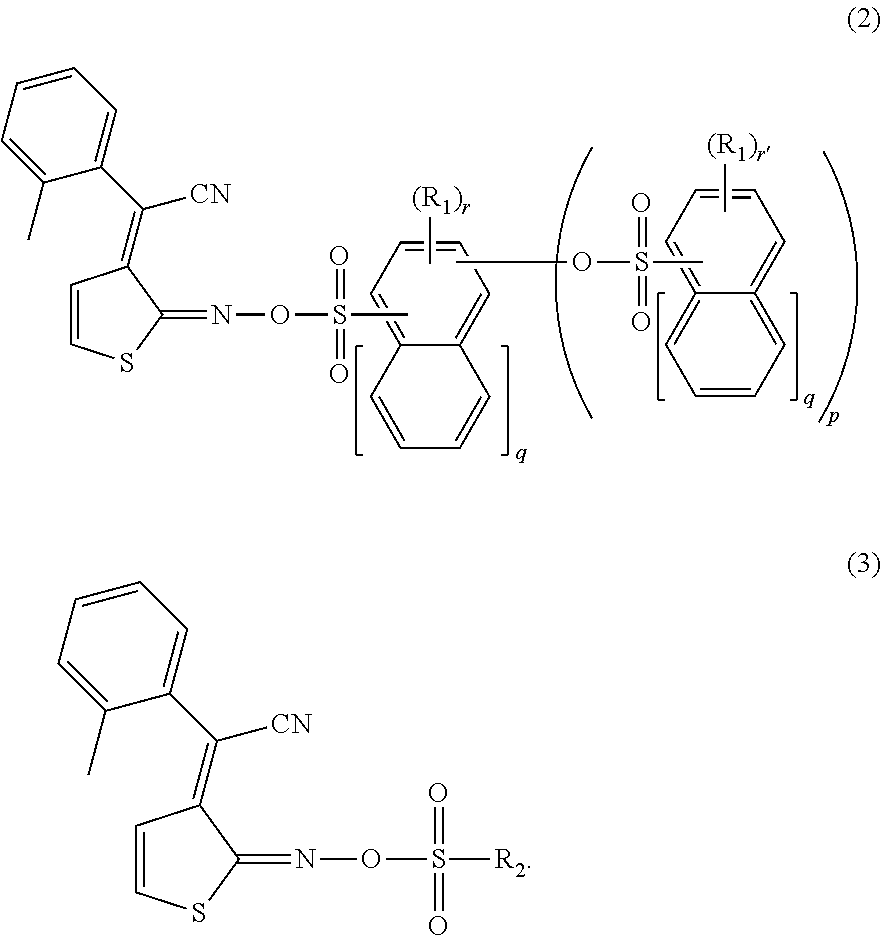Method for manufacturing substrate for making microarray
a technology of microarrays and substrates, applied in the field of analysis technology, can solve the problems of complicated and expensive 22 and achieve the effect of low cos
- Summary
- Abstract
- Description
- Claims
- Application Information
AI Technical Summary
Benefits of technology
Problems solved by technology
Method used
Image
Examples
production example 1
Production of 10-(methoxymethoxy)decyltrimethoxysilane
[0140]Under a nitrogen atmosphere, 64 g of trimethoxysilane and 0.57 g of acetic acid were dropped in a mixture of 100 g of 10-(methoxymethoxy)-1-decene and a catalytic amount of a solution of platinate chloride in tetrahydrofuran at 80° C. The reaction mixture was stirred at 80° C. for 3 hours, and distilled under reduced pressure to yield 131 g of a target compound.
[0141]10-(Methoxymethoxy)decyltrimethoxysilane
[0142]Boiling point: 142° C. / 66 Pa
[0143]IR (liquid film)vmax: 2927, 2854, 2840, 1465, 1191, 1143, 1089, 1049 cm−1
[0144]13C-NMR (150 MHz, CDCl3) δ: 9.10, 22.55, 26.18, 29.19, 29.39, 29.56, 29.71, 33.09, 50.44, 55.03, 67.84, 96.34 ppm
[0145]1H-NMR (600 MHz, CDCl3) δ: 0.59-0.62 (2H, m), 1.21-1.39 (14H, m), 1.52-1.57 (2H, quintet-like), 3.32 (3H, s), 3.48 (2H, t, J=7 Hz), 3.53 (9H, s), 4.58 (2H, s) ppm.
production example 2
Preparation of a Monomolecular Film Forming Material Solution
[0146]A 2.1 g of 10-(methoxymethoxy)decylmethoxysilane obtained in Example 1 and 5.9 g of hexyltrimethoxysilane were dissolved in 4% dichloromethane-hexane to 1 liter which was used as a monomolecular film forming material solution.
production example 3
Preparation of a Polymer
[0147]Monomer components necessary for the preparation of a polymer used for the formation of a polymer layer were combined, and allowed to copolymerize in a solvent of isopropylalcohol, and the polymer was crystallized in hexane. The polymer was washed with hexane repeatedly, isolated, and dried to give polymer 1 whose composition is as given below. The composition of the polymer was confirmed by 1H-NMR, and its molecular weight and dispersive power by gel permeation chromatography.
[0148]Polymer 1
[0149]Molecular weight (Mw)=7,300
[0150]Dispersion degree (Mw / Mn)=1.67
[0151]
PUM
| Property | Measurement | Unit |
|---|---|---|
| wavelength | aaaaa | aaaaa |
| time | aaaaa | aaaaa |
| thickness | aaaaa | aaaaa |
Abstract
Description
Claims
Application Information
 Login to View More
Login to View More - R&D
- Intellectual Property
- Life Sciences
- Materials
- Tech Scout
- Unparalleled Data Quality
- Higher Quality Content
- 60% Fewer Hallucinations
Browse by: Latest US Patents, China's latest patents, Technical Efficacy Thesaurus, Application Domain, Technology Topic, Popular Technical Reports.
© 2025 PatSnap. All rights reserved.Legal|Privacy policy|Modern Slavery Act Transparency Statement|Sitemap|About US| Contact US: help@patsnap.com



